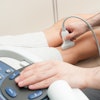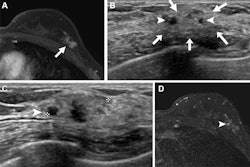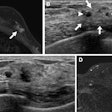Intracardiac echocardiography (ICE) is noninferior to transesophageal echocardiography (TEE) in preventing thromboembolic complications from atrial fibrillation (AF) ablation procedures, suggest findings published October 8 in JAMA Network Open.
ICE also has advantages over TEE in terms of safety, efficiency, and patient comfort, wrote a research team led by Xiaofeng Hu, MD, from the Shanghai Jiao Tong University School of Medicine and colleagues.
“These results provide robust clinical evidence to support the broader adoption of ICE as a first-line imaging modality in selected patients undergoing AF ablation,” the group wrote.
TEE is the standard imaging approach for AF ablations. However, it is a semi-invasive procedure that has its share of risks. These include patient discomfort and complications such as oropharyngeal, laryngeal, and esophageal injury.
Previous studies suggest that ICE can detect left atrial appendage (LAA) thrombus with high accuracy. However, it is an invasive procedure. ICE is recommended conditionally for cardiac screening in AF ablation procedures, with TEE being the first-line imaging modality. And while some societies recommend ICE as a replacement for TEE in assessing LA thrombus, Hu and co-authors noted a lack of robust clinical evidence supporting this approach.
The researchers studied whether ICE is noninferior to TEE in preventing complications during AF ablation in a multicenter, randomized clinical trial. The study took place in 10 Chinese hospitals from 2022 to 2023 with a 30-day follow-up. The study enrolled 1,810 patients with an average age of 64. Of the patients, 887 had paroxysmal AF.
The team randomly placed 906 patients into the ICE cohort and 904 into the TEE cohort. The team found that thromboembolic events and thrombus detection occurred at similar rates between the two cohorts. And ICE led to lower rates of major bleeding related to transseptal puncture.
Comparison between ICE, TEE | |||
Measure | TEE | ICE | p-value (for noninferiority) |
Thromboembolic events | 0.6% | 0.4% | 0.01 |
Thrombus detection rate | 1.5% | 2% | 0.48 |
Non–left atrial appendage thrombi | 0% | 0.6% | < 0.001 |
Major bleeding from transseptal puncture | 1.2% | 0.2% | 0.03 |
ICE led to reduced fluoroscopy time on average, at 4.2 minutes compared with 9.3 minutes for TEE (p < 0.001). It also led to less preprocedural waiting time (14.4 hours vs. 23.6 hours, p < 0.001) and less prevalence of anxiety or depression among patients (24.6% vs. 37.5%, p < 0.001) compared with TEE.
The study authors suggested that ICE may be a flexible and efficient imaging modality that could serve as a suitable alternative to TEE in real-world clinical scenarios. This is with respect to image clarity, maneuverability, and patient suitability.
As for the time saved through ICE, the authors wrote that this may be due to esophageal intubation, sedation, and additional anesthesia preparation not being needed for this procedure.
Read the full study here.




















